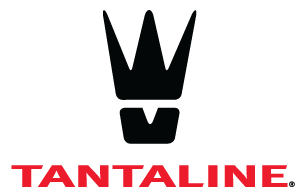How Is Tantaline® Treatment Superior to Other Coating Systems?
Tantaline® surface treatment have been developed to benefit from the extraordinary acid resistant properties of tantalum metal while reducing the costs compared to parts made from solid tantalum. Robust performance for Tantaline® treated parts has been well established during use over the last 15 years in the most challenging applications. This unique chemical vapor deposition (CVD) surface treatment has proven to provide the right balance of performance, lead time, and price across a wide range of industries.

Tantaline® Treatment vs. Tantalum Cladding
Tantaline®'s Surface Alloy Technology: Tantaline® Treatment
Through the evolution of acid resistant tantalum coating technologies, Tantaline®’s surface alloy has been developed. This technology has the capability of producing very repeatable and consistent pinhole-free surfaces of pure tantalum metal at a thickness between 0.002" - 0.008" (50um - 200um). Unlike line-of-sight spray tantalum coatings, Tantaline® treatment is geometry-independent, and even the most complex parts can be treated both on internal and external surfaces. In addition, because the tantalum metal is grown into the substrate and is thus alloy bonded, the typical coating modes of failure like delamination, chipping, and spalling are virtually non-existent.
Tantalum Cladding
Tantalum cladding is often used as an alternative to tantalum coatings for fabricating parts out of solid tantalum. The technology is relatively labor-intensive, and the material consumption is very high. As a result, acid resistant tantalum cladding remains cost-prohibitive and reserved for only the most aggressive applications where specialty alloys will not survive.
When cladding a part in tantalum, a tantalum foil/sheet (liner) is applied to the part’s surface. As tantalum cannot be welded to stainless steel, tantalum liners are always loose. The tantalum clad is applied in relatively thick sheets (1 mm and above) since there needs to be enough material for a stable design and fabrication. Where more than one sheet/foil is connected, the tantalum has to be welded. This requires a very high temperature (exceeding 3000°C) and controlled atmosphere. The welding operation is difficult to handle and requires special workshops. When tantalum clad fails, it is often due to material failures in the welded areas that may be porous, have reduced strengths or have become brittle due to an insufficient control of the welding atmosphere. Also, there may be a risk of alloying the base material into the welding zone, as the melting temperature of e.g. a stainless substrate is far below the welding temperature of tantalum metal.
Tantalum Cladding: Advantages
The main advantage of tantalum clad is that large structures (e.g. large vessels/tanks) can be treated, and that heavy tantalum layers can be applied.
Tantalum Cladding: Disadvantages
The main disadvantages of cladding are the difficulty of fabrication and its very high costs. The costs of tantalum cladding are an order of magnitude higher than Tantaline® treatment, and is, therefore, only used as a replacement for solid tantalum on large equipment. Complex parts like valves and fittings are extremely difficult to produce and protect from corrosion through tantalum cladding.
